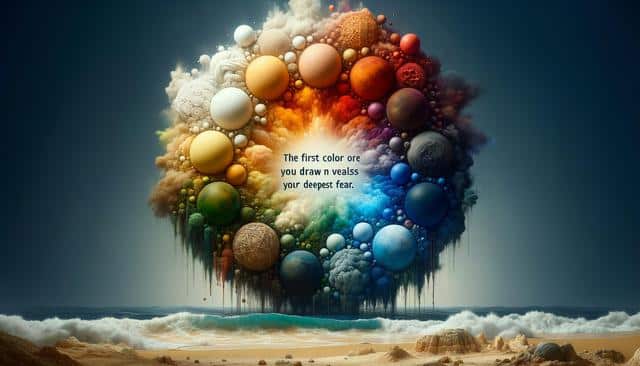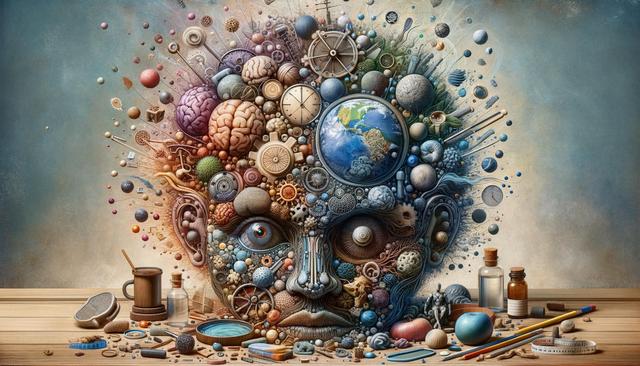
The Color You’re Drawn to First Reveals Your Deepest Fear
The Psychology Behind Color Preferences
Color plays a significant role in human psychology. It not only affects how we perceive the world, but it can also influence our mood, behavior, and even our fears. According to several theories in color psychology, the shades we’re drawn to first often reflect deeper, hidden aspects of our personality. This idea forms the basis of the concept that The Color You’re Drawn to First Reveals Your Deepest Fear. Our subconscious mind associates different colors with specific emotions or memories, some of which may be rooted in fear or discomfort. These associations are formed through personal experiences, cultural upbringing, and even evolutionary biology, making the connection between color and fear both complex and deeply personal.
For example, someone who gravitates toward the color red might be subconsciously dealing with a fear of vulnerability or losing control. Red is a powerful and intense color, often linked to passion and aggression. On the other hand, a preference for blue may indicate a fear of chaos or unpredictability, as blue symbolizes calm and stability. Understanding these preferences requires more than a surface-level glance; it invites a deeper exploration into one’s emotional landscape.
What Different Colors May Reflect About Your Fears
If you’ve ever wondered why a particular color appeals to you more than others, you may find some revealing insights by looking closer. The idea that The Color You’re Drawn to First Reveals Your Deepest Fear suggests that each color can symbolize a specific type of internal struggle or anxiety. Here are some common interpretations:
- Red: Fear of vulnerability, being overpowered, or emotional exposure.
- Blue: Fear of unpredictability, chaos, or emotional instability.
- Yellow: Fear of inadequacy or not being taken seriously.
- Green: Fear of change or losing balance in life.
- Black: Fear of the unknown or confronting one’s inner darkness.
- White: Fear of imperfection or emotional clutter.
While these interpretations are not definitive, they can offer a useful starting point for self-reflection. Understanding your emotional response to color can help you uncover hidden fears and encourage personal growth.
How the Subconscious Influences Color Choices
Our subconscious mind plays a large role in the decisions we make, including seemingly minor ones like color preferences. The theory that The Color You’re Drawn to First Reveals Your Deepest Fear relies on the idea that our instincts are shaped by past experiences, especially those linked to emotional events. When we face stress or uncertainty, the subconscious may guide us toward colors that feel safe or familiar, even if we’re not fully aware of why.
This process is often automatic. For instance, someone with a fear of rejection might find themselves drawn to green, a color associated with harmony and acceptance. Alternatively, an individual fearful of being invisible or overlooked might prefer bright hues like orange or yellow, which are typically linked to attention and energy. These choices are not coincidences; they reflect subconscious attempts to soothe or counterbalance internal fears.
By paying attention to your first color choice in different settings—whether it’s picking out clothes, home decor, or even artwork—you may begin to notice patterns that align with your emotional state. Recognizing this can be the first step in understanding yourself on a deeper level.
Using Color Awareness for Personal Growth
Once you accept the idea that The Color You’re Drawn to First Reveals Your Deepest Fear, you can use this awareness for self-improvement. Rather than avoiding colors that make you uncomfortable, consider exploring them. This can help you confront and process unresolved fears. For example, if black feels oppressive but also oddly appealing, it might hint at a need to face hidden emotions or past traumas.
- Journaling about how certain colors make you feel can bring clarity to your emotional triggers.
- Experimenting with new color palettes in your environment can shift your mindset and emotional responses.
- Using color in creative activities like painting or fashion can offer insights into your mood and subconscious thoughts.
Therapists and counselors sometimes incorporate color therapy into their practices to help individuals express emotions they find hard to articulate. Whether or not you pursue formal therapy, being mindful of your color choices can still serve as a valuable tool for emotional exploration.
Color in Cultural and Social Contexts
While the idea that The Color You’re Drawn to First Reveals Your Deepest Fear is rooted in psychology, it’s also influenced by cultural and social contexts. Different cultures assign different meanings to colors, which can shape how individuals perceive and respond to them. For instance, white often symbolizes purity in Western cultures but is associated with mourning in some Eastern traditions. These associations can subtly affect your emotional response to color without you realizing it.
Social influences, such as marketing and media, can also play a role. Colors are often used in branding to evoke specific emotional reactions. Over time, repeated exposure to these cues can shape personal preferences and aversions. Understanding how external influences affect your color choices can help you distinguish between societal conditioning and genuine emotional resonance.
By examining your color preferences through both personal and cultural lenses, you can gain a more comprehensive understanding of your emotional landscape. It’s a reminder that our interactions with color are not just personal—they are also shaped by the world around us.
Conclusion: Embracing Self-Discovery Through Color
The idea that The Color You’re Drawn to First Reveals Your Deepest Fear offers a compelling lens for self-exploration. While not a definitive psychological diagnosis, it encourages introspection and helps uncover hidden emotional patterns. By paying attention to your instinctive color choices, you can gain new insights into your fears, motivations, and emotional needs.
Whether you’re simply curious or actively seeking personal growth, exploring your relationship with color can be a meaningful part of your journey. It’s a subtle yet powerful way to connect with your inner self and build greater emotional awareness.


